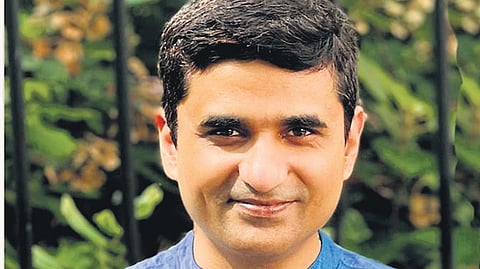

CHENNAI : Through the years, Indian mythological tenets have shown Lord Rama as the ‘God of North India’. But did you know that the Chola period marks the emergence of storytelling sculptures depicting the Ram Katha, providing a unique perspective on the ancient narrative?
In his 14-year research, author Gokul Seshadri unearthed this and more such tidbits, which trace their roots to the Sangam period. This has culminated into a Ayodhip Perumal, an intricate work on the first 1600 years of Ram Katha traditions in Tamil Nadu.
The book emerges as the first original publication of Kadhai Osai, a Tamil audiobook podcast helmed by Deepika Arun. Launched on the Storytel app, Gokul’s words and Deepika’s storytelling hold listeners with eye-opening revelations of the Rama tradition. Distant from the mainstream traces, Ayodhip Perumal reads out the extensive in-scripts of Ram Katha, establishing Tamil Nadu as the earliest hub of Rama worship in India.
Tracing back to the 9th century, the trails of the Chola, Pandya, and Tondai Mandalam saw the beginning of sculptural and epigraphic references towards the Rama worship in Tamil Nadu. Independent temples were consecrated, images of Rama were installed and endowments were provided to conduct daily rituals and festivals. The book comprises 36 inscriptions that directly refer to Rama temples and offerings made to the Lord in the form of Sridhanas. “The worship of Rama (bhakti), hails from the literature of Sangam, and post-Sangam, resulting in the occurrence of the first temple in 881 CE at Vijayanarayanam, as the Thiru Ayodhi Perumal,” says Gokul.
Rooted in passion
Starting with travelogues and fiction in Tamil, Gokul gradually delved into the realms of novels with inspiration from the renowned KalkiKrishnamurthy. His fascination with history marked the genesis of the first research book on the significance of Tamil in Rama Katha.
“With the booming discussions on Ram Janmabhoomi since the last two years, I wanted to represent the contributions of the Tamil land of its association with Rama, being the earliest of all the regions throughout the country,” shares the author.
Through centuries, prominent sages have named temples based on the god and the region it stand in. Surprisingly, Gokul’s work supports the shade, calling the Tamil temples Ayodhipperumal, signifying Rama Katha’s roots in Tamil Nadu, consecrated in the 10th century. The revelation also marks the earliest reference to Hanuman in the Ram Parivar from the Tamil inscriptions of ‘Mahabali Hanumadevta’ by the Chola iconology. “The epigraphic reference to Hanuman worship as a divine god comes from the sculptures of Konar, Kancheepuram in the 10th century,” he notes.
Read and listen
Recognising the power of audio storytelling to convey the 500-page text of Ayodhip Perumal, the classic Tamil story is podcasted as a chapter series, rendered by Deepika, the speaker-producer of Kadhai Osai. “There must be uniform pace and tempo for every fact we raise in a non-fiction research book like Ayodhip Perumal. Deepika’s conversational tone enhances the understanding of intricate historical details,” says Gokul.
With a fervent desire to kindle interest in Tamil traditions and inspire further research, the audiobook acts as a beacon of hope and also paves the way for a more inclusive and nuanced understanding of India’s diverse historical narrative. “I aspire my work to kindle in two fronts — learning more about the Tamil tradition and connecting us to who we are as Bharatiyas,” he signs off.